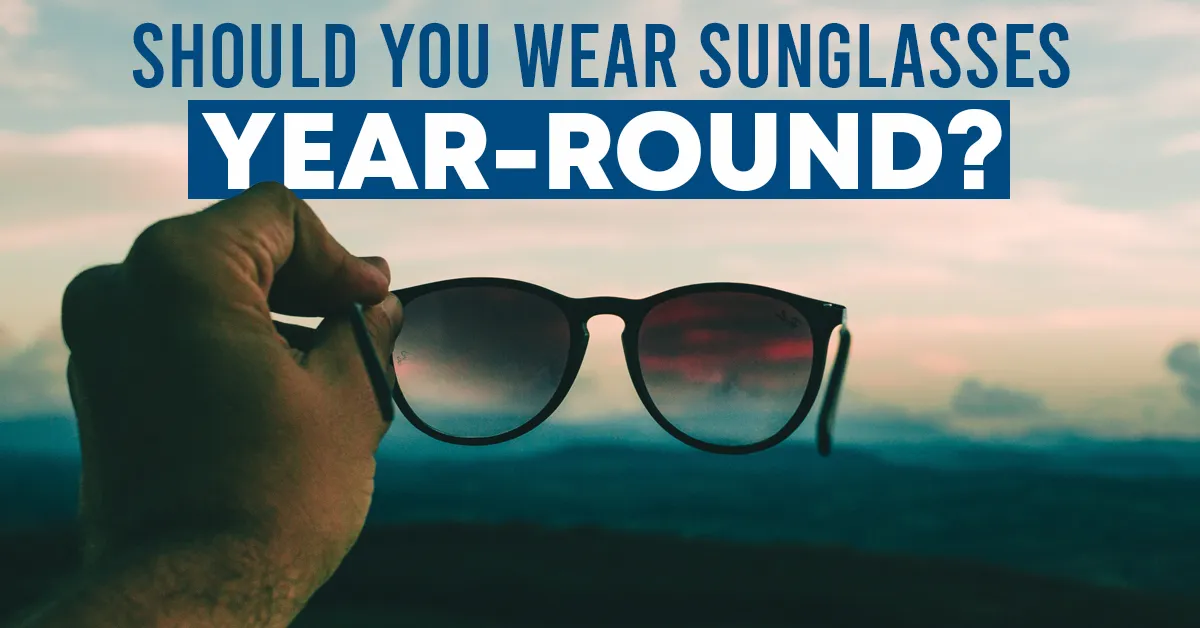Sunglasses have something of a reputation for being stylish, but also functional in a meaningful way. They make it easier to see in bright sunlight and play an important role in protecting your eyes from damage.
There is a stigma around wearing sunglasses in unusual situations – like indoors or at night. This can actually cause strain on your eyes as wearing them indoors or at night is not necessary unless you have a medical reason to do so.
But on overcast days, cool fall mornings, and even in snowy winters, there is value in wearing sunglasses outside in the daylight.
UV Rays are Present Year-Round
The sun’s UV rays can be damaging to your eyes. It’s likely easier to rationalize this when you’re sweating in the summer heat. But UV rays are present year-round.
Snow can reflect up to 80% of UV rays compared to just 25% reflected by concrete. This means when you’re out on a sunny winter day you have two sources of UV light to contest with, the sun, and the reflection coming off the snow below you.
Thankfully the tilt of the earth during winter months makes the UV levels the sun gives off less harsh in the winter. But the snow reflection can create a bright blinding sensation without sunglasses, making it difficult to see and drive.
Whether you are outside or driving your car, it’s a good idea to wear your sunglasses year-round.
What do Sunglasses Do?
Sunglasses are made out of a material that is UV protective. Ideally, you purchased a pair of sunglasses that is 100% UV protective.
Wearing sunglasses can help prevent eye disease as well as the development of skin cancer and wrinkles around your eyes. They can make it easier to drive and see on bright days because they reduce glare.
Lastly, sunglasses are a physical barrier between your eye and debris.
What are the Best Sunglasses to Buy?
You may pick a pair of sunglasses by the design of their frames, but really the lens is the most important. A good pair of sunglasses will block UVA and UVB lights at the highest level you can find – and this often is purchasable for a modest price.
There are many different lens colors on the market today with brown, gray, green, and yellow being the best selections for driving. Usually, the color is purely cosmetic, but it does affect the tint you will be looking through. Sunglasses that have a polarization feature can be helpful for reducing glare.
The style might not be for everyone, but a pair of wrap-around sunglasses with a thicker frame will best protect your eyes.


